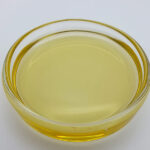Injectable fillers are one kind of nonsurgical cosmetic surgery which is very popular all around the globe. Fillers smooth lines, plump up wrinkles, and give your face back its volume to help it appear younger and healthier. These are administered by your healthcare professional as subcutaneous injections. Individuals who want to look younger or to accentuate certain facial characteristics go for fillers. There is little recuperation time required after this elective procedure, which typically lasts less than 30 minutes. Depending on the filler kind and placement, results might range from months to years. They are immediately noticeable and keep improving as the side effects cure.
Fillers come in several types. You and your healthcare professional will talk about your alternatives depending on what your skin requires. There are dangers associated with any cosmetic operation, such as bleeding, bruises, and infections. Filler injections and other elective cosmetic procedures are typically not covered by health insurance coverage and one needs to be careful and informed.
Why do people use fillers?
Your body begins to lose collagen as you get older. All across your body, including in your skin, muscles, bones, and connective tissues, is a material called collagen. Skin laxity, looseness, and volume loss are brought on by decreased collagen levels in the skin. Skin starts to sag, gets thinner, and loses its suppleness.
Choosing to receive fillers can help you:
Give sagging skin volume.
Ensure greater symmetry in the features on your face.
Boost your cheekbones and lips.
Your face’s creases and wrinkles should be smooth.
Certain drugs used to treat illnesses like HIV and AIDS might make you appear thinner in the face. After taking these drugs, some people decide to receive dermal filler to give their faces more volume.
How often are facial fillers used?
Fillers are used often. Over 3 million Americans elect to have fillers inserted annually.
Which kinds of fillers are there?
Fillers come in a variety of options. Healthcare professionals can employ your body fat in addition to “off-the-shelf” fillers that use synthetic (man-made materials) and chemicals that naturally occur in your body. Doctors refer to the process of taking fat from one area of your body and injecting it into your face as “autologous fat grafting.”
Among the varieties of store-bought fillers are:
Your skin contains a naturally occurring acid called hyaluronic acid (HA). It moisturizes and adds volume to your skin. Injections of HA typically provide results that last six months to a year. An HA filler that is frequently used is called Restylane.
Filler called calcium hydroxylapatite (CaHA) is made of a material found in your bones. Usually, the effects of these fillers endure for a year or so. CaHA fillers are typically used by medical professionals to treat deeper wrinkles.
A chemical called poly-L-lactic acid (PLLA) aids in the production of collagen by your body. Poly-L-lactic acid is typically used by medical professionals to treat deep facial creases. The outcomes may last for up to two years.
Collagen and tiny balls are the ingredients of polymethylmethacrylate (PMMA) fillers, which are injected under your skin and remain there. Your skin remains firm and has volume thanks to the balls.
What takes place before a filler treatment?
You will have a consultation with your healthcare physician before receiving fillers. You might want to see one. They will look at your face and inquire about your objectives and desired improvements. They guide you and provide you with information that leads to realistic expectations and no sudden disappointments with the result.
To indicate the location of the injections, they could use a pen or marker to make marks on your face. They might even snap a photo of your face. In addition to discussing potential side effects and recovery time, your healthcare professional will suggest a particular kind of filler that will be perfect for achieving the result you might be looking for.
If you take any medications, it is crucial to let them know as some of them may raise your risk of issues after obtaining fillers. You should never miss informing your doctor about your:
Allergies.
History of bleeding or bruises following comparable treatments.
Neurological issues.
Skin ailments.
What takes place when getting fillers?
Fillers are available at the office of your healthcare professional. A medical spa, sometimes known as a medspa or medispa, is where some people decide to receive fillers. This is a medical facility that offers aesthetic procedures in a setting reminiscent of a spa. After cleaning your skin, your healthcare professional could apply an anesthetic-containing lotion or cream. To make the procedure more comfortable, the anesthetic numbs the affected area.
Your doctor will inject tiny amounts of fillers beneath your skin using a fine needle. Although most people do not feel any discomfort during these injections, the needle may pinch or sting. Multiple locations may be injected with fillers by your healthcare practitioner. The entire procedure may take an hour or only a few minutes depending on the area.
What transpires following a filler treatment?
Your healthcare practitioner will wash your skin following filler injections. To help with pain and swelling, they might give you an ice pack. These side effects are usually minor and disappear after a few days.
Many patients who receive these injections have immediate results. However, each person’s outcomes are unique. You will experience varying results depending on several things, one of which is the sort of treatment you had.






















Add Comment